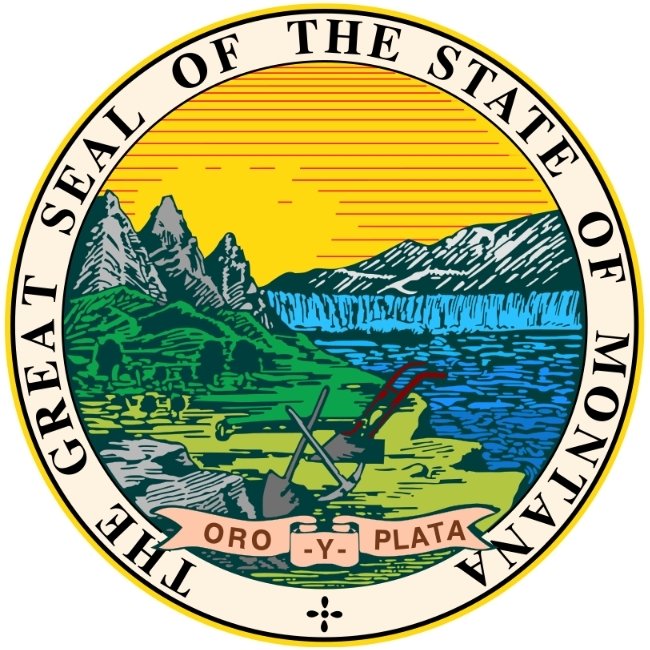Shortly after America’s independence in 1776, states like Montana began to adopt their own official state seal, motto, nickname, and more, which are all used to symbolize and represent the uniqueness of each state and what they stand for.
When was the Montana state seal originally designed? The great state seal was originally designed by Francis McGee Thompson, a representative from Beaverhead County, who submitted the basic seal design at the First Legislative Assembly at Bannack, the Territory Capital, in 1865.
The design itself displayed the words “Oro el Plata,”, which then lead to the adoption of the nickname, Treasure State, it was later changed to “Oro y Plata”, which is Spanish for gold and silver. The design of the seal consists of a plow and a miner’s pickaxe and shovel above the Spanish words, representing the state’s agricultural history and mineral wealth.
When Montana changed from a territory to a state in 1889, the seal also underwent changes. In 1891 legislators began debating the design of the state seal, suggesting adding things such as Indians, settlers, miners, horses, sheep, cattle, a train, or stagecoach. They quickly realized that it would become to populated with all of these changes, and so they decided to leave it alone.

Great State Seal of Montana
The great state seal of Montana showcases the state’s rich and influential history, as well as the sheer natural beauty that is constantly on display. The seal features a sun setting over snowy mountains, the great waterfalls of the Missouri River, the farming and agricultural tools mentioned previously, and a ribbon with the state’s motto displayed at the bottom.
Most states will have their seals showcase a relevant story, that is indicative of the state and its history, and the Treasure State puts its history and what it stands for across very well in its state seal. The Great Seal of the State of Montana is a vivid symbol of all that is special about Big Sky Country!


